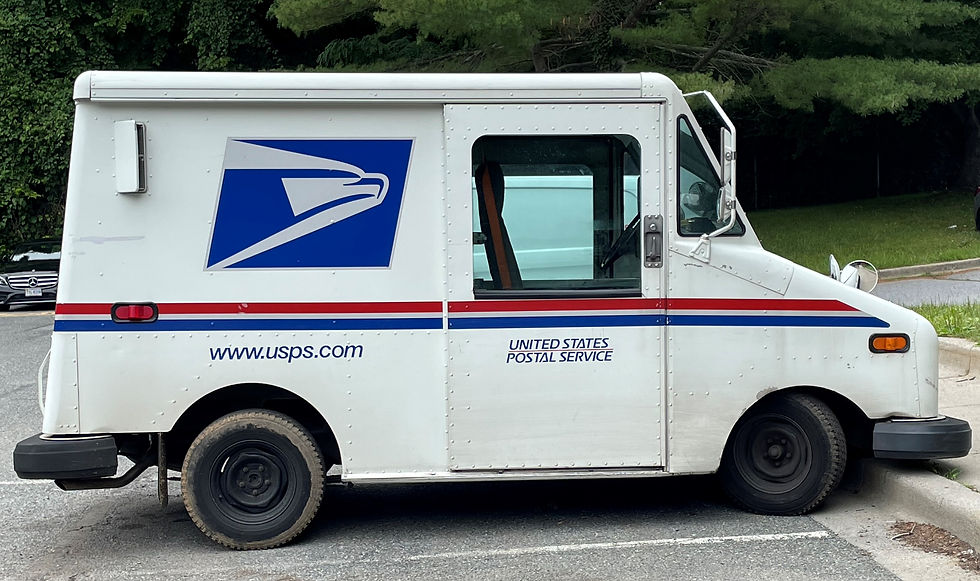How To Generate A Tracking Number

Welcome to the comprehensive guide on generating tracking numbers, a crucial aspect of logistics and supply chain management. In today's fast-paced world, tracking shipments has become an essential practice for businesses and individuals alike. This article will delve into the various methods and technologies used to generate tracking numbers, providing an in-depth understanding of the process.
Understanding Tracking Numbers
A tracking number, also known as a consignment note, is a unique identifier assigned to a package or shipment. It serves as a vital tool for tracking the movement of goods throughout the supply chain, from the sender to the recipient. These numbers are typically alphanumeric and can range from 8 to 30 characters in length, depending on the carrier and the type of shipment.
The primary purpose of a tracking number is to provide visibility and transparency to the shipment process. It allows stakeholders, such as shippers, carriers, and recipients, to monitor the progress of a shipment, ensuring timely delivery and efficient management of logistics operations.
Types of Tracking Numbers
Tracking numbers can vary based on the shipping carrier and the type of service. Here are some common types of tracking numbers:
- Domestic Tracking Numbers: These are used for shipments within a single country and are often shorter in length. They provide detailed information about the shipment's journey within the domestic network.
- International Tracking Numbers: For cross-border shipments, international tracking numbers are employed. These numbers are typically longer and may require specific formatting to accommodate different countries' requirements.
- Courier-Specific Tracking Numbers: Each courier or shipping company may have its own unique tracking number format. For instance, FedEx uses a 12-digit number, while UPS utilizes a 17-digit alphanumeric code.
- Consolidated Tracking Numbers: In cases where multiple shipments are combined into a single consignment, a consolidated tracking number is generated. This number represents the entire group of packages and provides an overview of their collective journey.
Generating Tracking Numbers
The process of generating tracking numbers involves a combination of technology, data management, and carrier-specific protocols. Here’s an overview of the key steps involved:
Step 1: Data Collection
The first step in generating a tracking number is data collection. This involves gathering relevant information about the shipment, such as the sender’s and recipient’s details, the package’s dimensions and weight, and the desired shipping service.
Modern shipping management systems often integrate with ERP (Enterprise Resource Planning) software, CRM (Customer Relationship Management) platforms, and e-commerce solutions to automate data collection. This integration ensures that shipping data is accurately captured and synchronized across different systems.
Step 2: Carrier Selection
Once the necessary data is collected, the next step is to select the appropriate shipping carrier for the shipment. This decision is based on factors such as shipping speed, cost, and the carrier’s network coverage in the destination area.
Shipping management software often provides a comparison of different carriers' services and pricing, allowing businesses to make informed decisions. This step is crucial as it determines the tracking number format and the carrier's tracking system integration.
Step 3: Assigning Tracking Numbers
With the carrier selected, the shipping management system generates a unique tracking number for the shipment. This number is typically assigned automatically based on the carrier’s requirements and the shipment’s characteristics.
Tracking numbers are generated using various algorithms and may include information such as the carrier's code, the shipment's origin and destination, and a unique identifier. Some carriers also use advanced technologies like RFID (Radio-Frequency Identification) or QR codes to generate and track shipments.
| Carrier | Tracking Number Format |
|---|---|
| FedEx | 12-digit number starting with "7" |
| UPS | 17-digit alphanumeric code starting with "1Z" |
| DHL | 10-digit number with a combination of letters and numbers |
| USPS | 22-digit alphanumeric code starting with "94" |
Step 4: Tracking System Integration
After the tracking number is generated, the next step is to integrate it into the carrier’s tracking system. This integration ensures that the tracking number can be scanned, tracked, and updated in real-time throughout the shipment’s journey.
Shipping management software often provides APIs (Application Programming Interfaces) or web services to facilitate seamless integration with carrier systems. This allows for the automatic exchange of tracking data, ensuring accurate and timely updates for all stakeholders.
Tracking Number Technologies
The world of logistics has witnessed significant advancements in tracking number technologies, enhancing the accuracy and speed of shipment tracking. Here are some key technologies employed in the generation and tracking of shipping numbers:
Barcode Scanning
Barcode scanning is a widely used technology for generating and tracking shipping numbers. Barcodes, such as QR codes or UPC (Universal Product Code) barcodes, are printed on shipping labels and contain the tracking number and other relevant shipment details.
Barcode scanners, either handheld or integrated into sorting machinery, are used to read these codes, capturing the tracking number and updating the shipment's status. This technology is efficient, cost-effective, and widely adopted by carriers and logistics companies.
RFID Technology
Radio-Frequency Identification (RFID) technology is another advanced method used for generating and tracking shipping numbers. RFID tags, which contain a unique identifier and can be read wirelessly, are attached to packages or shipments.
RFID readers, placed at various points in the supply chain, scan these tags, capturing the tracking number and other shipment data. This technology provides real-time visibility, enabling carriers and logistics companies to track shipments with precision.
GPS Tracking
GPS (Global Positioning System) tracking is employed for real-time monitoring of shipments, especially for high-value or time-sensitive goods. GPS tracking devices are attached to shipments, providing location data and other relevant information such as temperature or humidity.
By integrating GPS tracking with the tracking number system, carriers and logistics companies can provide accurate and up-to-date information about a shipment's location, ensuring efficient management and timely delivery.
The Future of Tracking Numbers
The future of tracking numbers is poised for further innovation and integration with emerging technologies. Here are some trends and developments to watch out for:
Blockchain Integration
Blockchain technology, known for its security and transparency, is being explored for its potential in tracking number systems. By utilizing blockchain, carriers and logistics companies can create an immutable and transparent record of shipment data, enhancing trust and visibility.
Blockchain-based tracking number systems can provide an audit trail of every transaction and event related to a shipment, ensuring data integrity and reducing the risk of fraud or errors.
AI and Machine Learning
Artificial Intelligence (AI) and Machine Learning (ML) are transforming various industries, and logistics is no exception. These technologies can analyze vast amounts of data, including tracking number data, to identify patterns, optimize routes, and predict potential delays or issues.
AI-powered systems can also automate certain tasks, such as tracking number generation and shipment status updates, reducing manual intervention and improving efficiency.
IoT Integration
The Internet of Things (IoT) is revolutionizing logistics by connecting various devices and sensors to the internet. By integrating IoT devices with tracking number systems, carriers and logistics companies can gain real-time insights into the condition and location of shipments.
For instance, IoT sensors can monitor temperature, humidity, and vibration levels, providing critical information for perishable goods or sensitive shipments. This integration enhances visibility and enables proactive decision-making to ensure the integrity of the supply chain.
Conclusion
Generating tracking numbers is a critical process in the logistics industry, enabling efficient management and visibility of shipments. With the advancements in technology and the integration of innovative solutions, tracking numbers are becoming more accurate, secure, and accessible.
From barcode scanning to RFID and GPS tracking, the world of logistics is embracing cutting-edge technologies to enhance the tracking number generation and tracking process. As the industry continues to evolve, we can expect further innovations that will revolutionize supply chain management and improve the overall customer experience.
How can I track my shipment with a tracking number?
+To track your shipment, visit the carrier’s website or use their tracking app. Enter your tracking number, and the system will provide real-time updates on the shipment’s status and location.
Are tracking numbers unique for each shipment?
+Yes, tracking numbers are typically unique for each shipment. This ensures that the tracking system can accurately identify and track individual packages or consignments.
Can I track a shipment if I don’t have the tracking number?
+In some cases, carriers may provide alternative methods to track shipments without a tracking number. For example, they might use the sender’s or recipient’s details to locate the shipment in their system.
How long does it take for a tracking number to become active?
+The time it takes for a tracking number to become active varies depending on the carrier and the type of shipment. Generally, tracking numbers become active within a few hours to a day after the shipment is picked up.



